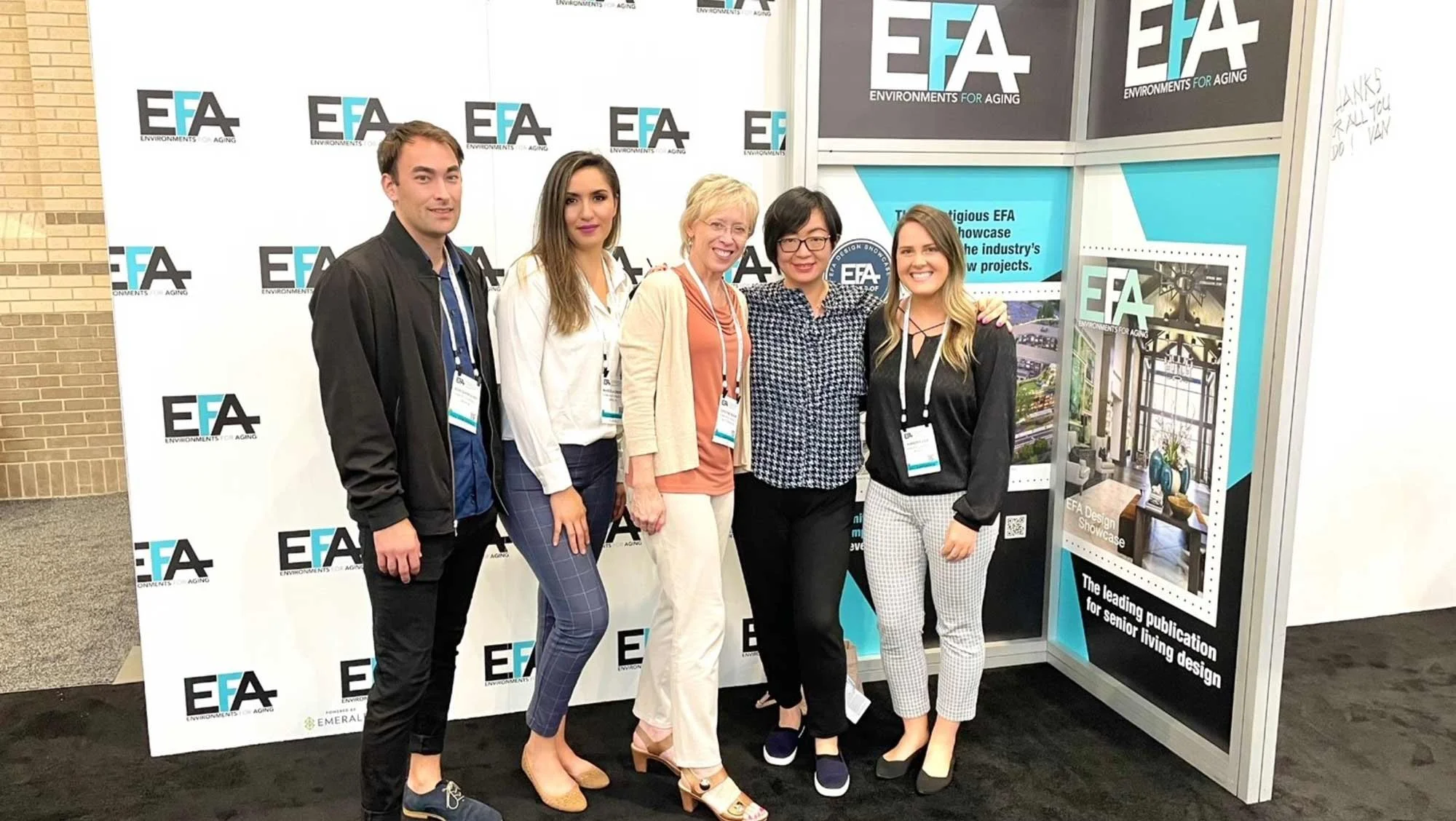Trending Topics of 2021 EFA Expo & Conference
Our team had the great opportunity to learn from some of the best in the senior living industry at the 2021 August EFA Expo & Conference in Chattanooga, TN. We received a wealth of information and ideas on ways to continue improving the quality of life in senior living while creating beautiful environments with a purpose through the power of design. However, we realize that passing down all that information in one blog would be nearly impossible. So here is a summary of a few topics that seemed to be trending among various speakers.
Intergenerational Community Concepts
This topic came up several times during various presentations. Intergenerational living is thought as a way to combat social isolation and loneliness among seniors, as this has been linked to health problems such as cognitive decline, depression, and heart disease. Our connection to others enables us to survive and thrive. Intergenerational community concepts strategically place senior living communities near daycares and grade schools to ensure seniors continue to participate in our communities. Programming is also a key in promoting activities among the different generations for socialization, learning opportunities, or play. Another intergenerational concept discussed was building seniors communities in the center of multi-family buildings where family members or caregivers who work in the senior units could potentially live in the multi-family apartments. The point is to avoid casting aside our elderly citizens and instead design communities where it facilitates socialization so they can continue to feel part of a larger community around them.
Smaller and More Defined Spaces
In a world where Covid is still very real, there were many discussions on how design can make it easier for residents to gather in smaller groups. Although open concepts help make a room feel much larger, the need for more defined and intimate spaces where a handful of residents can gather for tea or a game of cards seemed to be a trending topic of discussion. Open concepts spaces have proven to be less multi-functional because only one or two activities can occur simultaneously. Opposed to segmented spaces or smaller niches throughout the community that provide more privacy and allow for various activities without disturbing others.
Design That Promotes Efficiency and Wellness Among Staff
As operators continue to face staffing challenges, various presentations talked about how design can promote wellness among staff and possibly make their jobs less demanding to avoid burnout. Considering the day-to-day responsibilities and tasks is vital to designing spaces that logistically make sense for the staff members. A simple but thoughtful design is to strategically position storage rooms through the community that helps cut back on the amount of walking throughout the day—or perhaps ensuring that there is always enough clearance in wet areas such as a bathroom where a wheelchair, a resident, and a staff member often need to be in the same space at the same time. These simple decisions can not only avoid potential injuries, but it increases the caregiver’s efficiency. As for promoting wellness, incorporating a well-designed staff lounge with dining tables and couches to relax during their break can also help avoid burnout and increase morale among the staff.
Design That Promotes Movement & Participation
Although this is not a new concept, it’s always worth mentioning. As we age, we begin to lose muscles and mobility, and our environment can make an enormous difference in whether we continue to move. Giving residents an easy way and a reason to get out of their room can make a difference in that resident’s health. An example given was designing shorter corridors and presenting a more enticing view straight from the resident door. It provides that resident with an apparent reason to get out and socialize or take part in an activity. Another way of promoting movement is by including design elements that allow residents to participate in their daily care. For instance, by having armrests on shower seats, the resident can participate and help the caregiver in these daily tasks. Or having handrails by the sink where they might pull themselves up to perform daily hygiene tasks. Design that promotes movement and participation gives residents a sense of dignity and ensures that they continue moving their bodies.
At the Thoma-Holed Design firm, we consider ongoing education a vital source in designing innovative solutions for our clients, residents, and staff of the senior living communities. If you have any questions about the topics above or would like to discuss any other challenges you might be facing in a current community or new construction, we would love the opportunity to share our research base design solutions with you.

